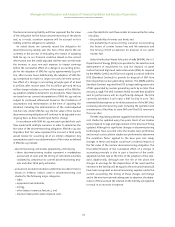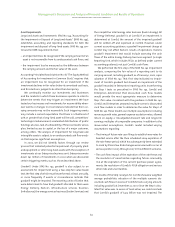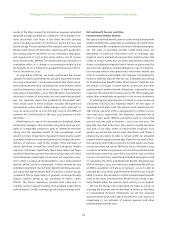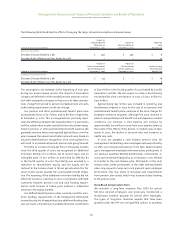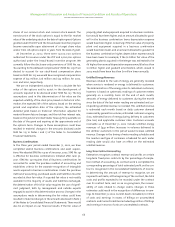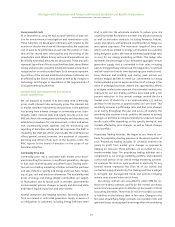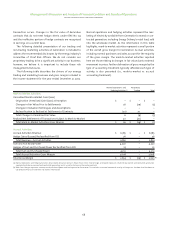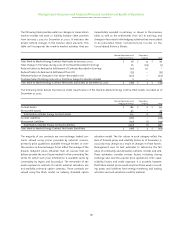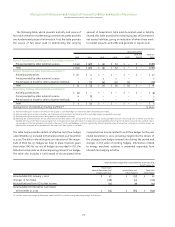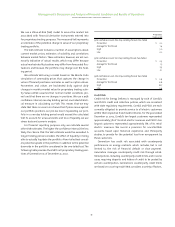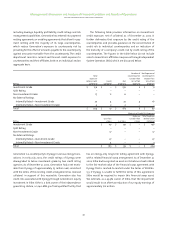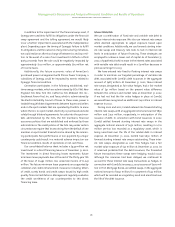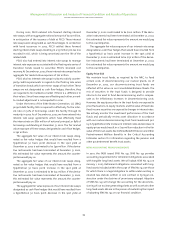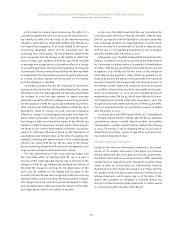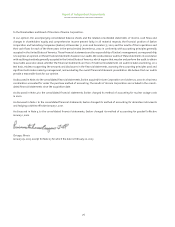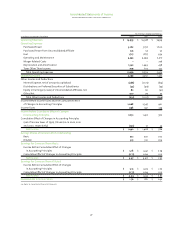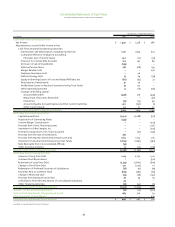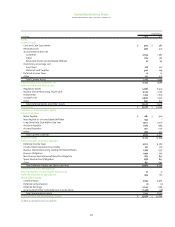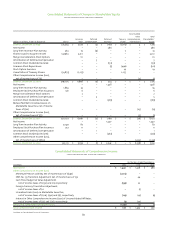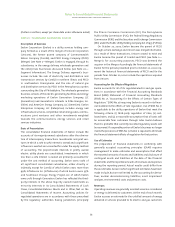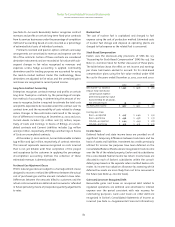ComEd 2002 Annual Report Download - page 74
Download and view the complete annual report
Please find page 74 of the 2002 ComEd annual report below. You can navigate through the pages in the report by either clicking on the pages listed below, or by using the keyword search tool below to find specific information within the annual report.
72
including leverage,liquidity,profitability,credit ratings and risk
management capabilities.Generation has entered into payment
netting agreements or enabling agreements that allow for pay-
ment netting with the majority of its large counterparties,
which reduce Generation’s exposure to counterparty risk by
providing for the offset of amounts payable to the counterparty
against amounts receivable from the counterparty. The credit
department monitors current and forward credit exposure to
counterparties and their affiliates,both on an individual and an
aggregate basis.
The following table provides information on Generation’s
credit exposure, net of collateral, as of December 31, 2002. It
further delineates that exposure by the credit rating of the
counterparties and provides guidance on the concentration of
credit risk to individual counterparties and an indication of
the maturity of a company’s credit risk by credit rating of the
counterparties. The figures in the table below do not include
sales to Generation’s affiliates or exposure through Independent
System Operators (ISOs) which are discussed below.
Management’s Discussion and Analysis of Financial Condition and Results of Operations
exelon corporation and subsidiary companies
Number of
Net Exposure of
Total Counterparties
Counterparties
Exposure Greater than Greater than
Before Credit Credit Net 10% of Net 10% of Net
Rating Collateral Collateral Exposure Exposure Exposure
Investment Grade $ 156 $ – $ 156 2 $ 71
Split Rating – – – – –
Non-Investment Grade 17 11 6 – –
No External Ratings
Internally Rated—Investment Grade 27 4 23 4 16
Internally Rated—Non-Investment Grade 4 2 2 – –
Total $ 204 $ 17 $ 187 6 $ 87
Maturity of Credit Risk Exposure
Exposure Total Exposure
Less than Greater than Before Credit
Rating 2 Years 2–5 Years 5 Years Collateral
Investment Grade $ 117 $ 39 $ – $ 156
Split Rating ––––
Non-Investment Grade 17 – – 17
No External Ratings
Internally Rated—Investment Grade 27 – – 27
Internally Rated—Non-Investment Grade 4 – – 4
Total $ 165 $ 39 $ – $ 204
Generation is a counterparty to Dynegy in various energy trans-
actions. In early July 2002, the credit ratings of Dynegy were
downgraded to below investment grade by two credit rating
agencies. As of December 31, 2002,Generation had a net receiv-
able from Dynegy of approximately $3 million and, consistent
with the terms of the existing credit arrangement,has received
collateral in support of this receivable. Generation also has
credit risk associated with Dynegy through Generation’s equity
investment in Sithe. Sithe is a 60% owner of the Independence
generating station, a 1,040-MW gas-fired qualified facility that
has an energy-only long-term tolling agreement with Dynegy,
with a related financial swap arrangement. As of December 31,
2002,Sithe had recognized an asset on its balance sheet related
to the fair market value of the financial swap agreement with
Dynegy that is marked-to-market under the terms of SFAS No.
133. If Dynegy is unable to fulfill the terms of this agreement,
Sithe would be required to impair this financial swap asset.
We estimate, as a 49.9% owner of Sithe, that the impairment
would result in an after-tax reduction of our equity earnings of
approximately $10 million.


